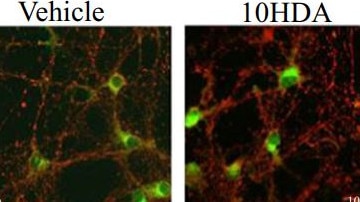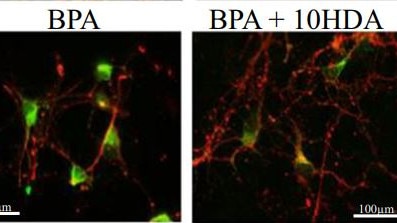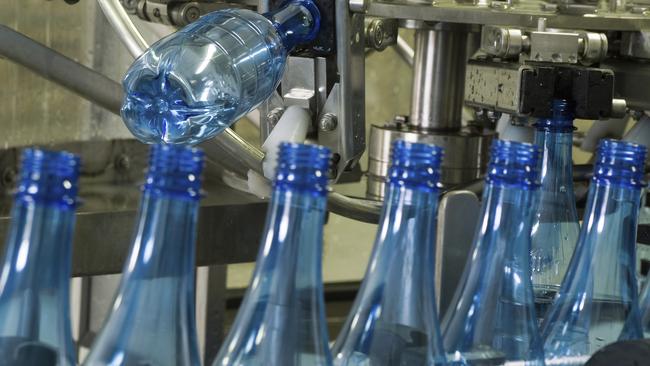BPA plastic in womb linked to autism, world-first study finds
A world-first study by Aussie scientists has discovered a link between a common chemical, and autism symptoms.

Pregnancy
Don't miss out on the headlines from Pregnancy. Followed categories will be added to My News.
Pregnant mothers who gave birth to boys with autism were found to have had higher levels of a plastic chemical commonly used in food packaging in their wombs, according to Aussie scientists in a world-first study.
A long-term peer-reviewed study by the Florey Institute in Melbourne found boys with lower levels of a key brain enzyme aromatase and who were born to mothers with high levels of the plastic chemical bisphenol A (BPA) in their wombs are three-and-a-half times more likely to have autism symptoms by the age of two.
By the age of 11, they are six times more likely to have had a verified autism diagnosis.
BPA can be found in takeaway containers, plastic bottles, the lining of takeaway coffee cups as well as polycarbonate (hard) plastics such as baby bottles.
It’s also used in the lining of cans to stop the food coming into contact with the metal, and is even found on the shiny coating of cash register receipts.
“Exposure to plastic chemicals during pregnancy has already been shown in some studies to be associated with subsequent autism in offspring,” Florey scientist and co-author Professor Anne-Louise Ponsonby said in a statement.
“BPA can disrupt hormone controlled male fetal brain development in several ways, including silencing a key enzyme, aromatase, that controls neurohormones and is especially important in fetal male brain development. This appears to be part of the autism puzzle.”
Speaking to The Australian, Professor Ponsonby stressed the chemical is “not the cause of autism”.
“Autism is a multi-factorial disease, and it’s going to have a range of genetic and other drivers. So this is a contributing factor in some cases.”


BPA is a chemical used to harden plastics which is commonly found food and drink packaging, and may be found in cosmetics.
“There are so many ways these chemicals enter our bodies, so, it’s not surprising that BPA was present in a large proportion of the women’s urine samples we studied. It’s important for us to understand how these plastics affect our health,” said Professor Ponsonby.
The study examined children from two large cohorts in the Barwon Infant Study in Australia and the Columbia Centre for Children’s Health and Environment in the US, over 10 years.
The research, published in Nature Communications, found the link between BPA presence and autism was particularly evident in the top fifth of boys with vulnerability to the endocrine-disrupting properties of BPA plastics.
“In both birth cohorts, mechanistic evidence demonstrated higher BPA levels were associated with epigenetic (gene switching) suppression of the aromatase enzyme overall,” the study found.

As well as humans, Florey scientist and co-author Wah Chin Boon also studied the impact of prenatal BPA on mice in lab work.
“We found that BPA suppresses the aromatase enzyme and is associated with anatomical, neurological and behavioural changes in the male mice that may be consistent with autism spectrum disorder,” Dr Boon said.
“This is the first time a biological pathway has been identified that might help explain the connection between autism and BPA.”
Professor Ponsonby said the findings suggested that about 10 per cent of autism diagnoses may possibly be prevented by avoiding BPA if the BPA autism link was causal in nature.
Researchers also investigated ways to reduce the adverse effect of BPA on the aromatase system.
They found a type of fatty acid called 10-hydroxy-2-decenoic acid was found to reverse the disruption of aromatase when injected in mice.
“10-hydroxy-2-decenoic acid shows early indications of potential in activating opposing biological pathways to improve autism-like characteristics when administered to animals that have been prenatally exposed to BPA,” said Dr Boon.
“It warrants further studies to see whether this potential treatment could be realised in humans.”

In a statement on its website, Food Standards Australia New Zealand notes small amounts of BPA can migrate into food and beverages from containers.
BPA is so common, about 95 per cent of people have detectable levels in their urine.
However it acknowledges “when food safety authorities around the world have reviewed BPA they have generally concluded there are no safety concerns at the levels people are exposed to.”
In April 2023, the European Food Safety Authority published a re-evaluation of the risks to public health from the presence of BPA in food and concluded the tolerable daily intake for BPA should be substantially reduced from the temporary value it had previously established in 2015.
FSANZ said it considered EFSA’s re-evaluation but had “reservations about the approach taken”.
“FSANZ is aware that a number of other agencies have reviewed, or are in the process of considering, EFSA’s re-evaluation of BPA.”
Originally published as BPA plastic in womb linked to autism, world-first study finds





